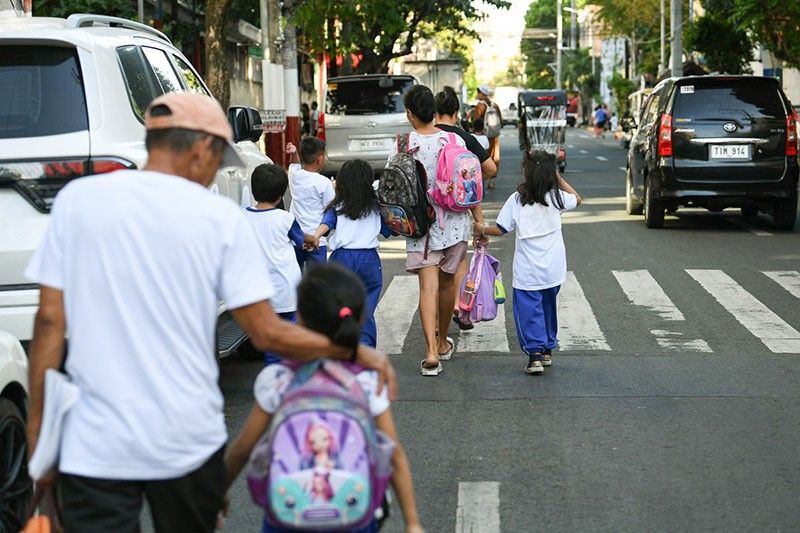Most Filipino families not reaping long-term gains of preschool education

MANILA, Philippines — Parents’ lack of awareness about the long-term gains of preschool education and limited government daycare centers have made most Filipino children lose out on the benefits of early childhood education.
A new report by the Second Congressional Commission on Education (Edcom II) shows that while a slew of laws has been passed since 2000 to widen access to early childhood education, 12-year data up to 2022 shows that fewer than half of all children aged 3 to 4 years old attended preschool.
The long-term benefits of enrolling children in preschool are well-documented as studies that show children who did not enroll in preschool "have higher chances of dropping out and lower chances of attaining upper levels of schooling,” said the report by Edcom II in collaboration with state think tank Philippine Institute for Development Studies.
Meanwhile, UNICEF’s 2019 analysis of a 2019 international assessment found that children who attended just one year of early education programs were “seven times more likely” to have mastered the fundamental reading skills expected by the end of elementary school and “four times more likely” to have learned the same for mathematics.
Edcom II said that the Philippines — a country where learning poverty is at 91% — still struggles to reap the gains from early childhood education due to parents’ lack of knowledge about how or why their children should go to school at 3 years old, as well as limited and inaccessible daycare or child development centers in rural areas.
As a result, participation rates have remained “stagnant” from 2011 to 2024, according to Edcom II, with modest gains derailed by the COVID-19 pandemic. As of 2022 (latest available data), only 20% or one out of five children aged 3-4 years old were enrolled in pre-kindergarten programs.
“Many parents of 3- to 4-year-old children opt out of early education programs because they believe it is premature for educational activities, a perception observed across poor and affluent households,” Edcom II said in its report.
According to a 2019 survey among parents cited by Edcom II, financial constraints and available of early education programs make up only a tiny portion of parents’ overall reasoning.
“In our focus group discussions with mothers in the poorest provinces of the Philippines, financial limitations emerged as a prominent barrier, making formal daycare services unaffordable due to prohibitive opportunity costs and related expenses, particularly for certain socioeconomic groups,” Edcom II added.
Even though some parents may want to enroll their children in pre-kindergarten centers, concerns remain about the poor upkeep of these facilities, while several poor municipalities still do not have one.
The report said that the country’s current pre-kindergarten facilities are short of around 33,000 to meet the 96,000 daycare / child development centers required to meet 100% of the demand, which “falls short of meeting the goal of universal access for children aged 3-4 to (Early Childhood Care and Development) services.”
Edcom II’s focus group discussions with mothers in BARMM (whose identities were not disclosed) also highlighted issues with the quality of educational facilities. Some of the mothers who cannot afford to enroll their children in private daycare said they are limited to choosing public schools that “lack workforce, teachers, and facilities.”
“I took my child to an Arabic school, and she didn't go back to that school because the facilities were bad—dark rooms. This provides many not-so-good experiences for the learners,” one mother told Edcom II.
“These concerns have been amplified by the recent pandemic, man-made conflicts, and political climate in various regions that deter parents from utilizing formal childcare services,” Edcom II said.
Edcom II also noted that enrolling in daycare centers may not be entirely free, as half of those attending (48%) pay participation fees.
Shortage of daycare workers
There are also not enough daycare or child development workers -- arguably the most important component in delivering pre-kindergarten services. On average, there are 19 enrolled children per daycare/child development worker in the country, which is three times the recommended standard by the ECCD Council (1 worker per 10 enrolled children).
Currently, there is also no standardized salary for daycare or child development workers, with local governments left to decide their compensation system on their own.
“To meet the goal of universal access for children, the country needs three times its current stock of daycare/child development workers (around 89,000) or approximately 240,000,” the report said.
- Latest
- Trending





























